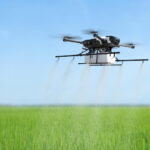When growing papaya in South Africa, there are several infections and diseases that you should watch out for. Here are some common ones:
- Papaya ringspot virus (PRSV):
This is one of the most destructive viruses affecting papaya crops worldwide. It is transmitted by aphids and causes yellowing of leaves, mottling, and ringspots on fruits. Infected plants should be removed and destroyed to prevent the spread of the virus. - Papaya mosaic virus (PapMV):
This viral disease is also transmitted by aphids and causes mosaic patterns on leaves, stunting of plants, and reduced fruit quality. Infected plants should be removed and destroyed. - Powdery mildew (Oidium caricae):
Powdery mildew is a fungal disease that affects papaya plants, causing a white powdery growth on leaves, stems, and fruits. It can reduce photosynthesis and weaken the plant. Fungicidal sprays and maintaining good air circulation can help control powdery mildew. - Anthracnose (Colletotrichum gloeosporioides):
Anthracnose is a fungal disease that affects papaya fruits, causing sunken lesions with dark, concentric rings. Infected fruits should be removed and destroyed, and preventive measures such as proper sanitation and fungicide application can be implemented. - Bacterial spot (Xanthomonas caricae-papayae):
This bacterial disease affects leaves, stems, and fruits, causing dark, water-soaked spots that may turn necrotic. Copper-based sprays can help control bacterial spot, and infected plant material should be removed and destroyed. - Fusarium wilt (Fusarium solani):
Fusarium wilt is a soil-borne fungal disease that affects papaya plants, causing wilting, yellowing, and stunting. There is no cure for Fusarium wilt, so prevention through crop rotation, soil sterilization, and use of resistant cultivars is crucial. - Root-knot nematodes (Meloidogyne spp.):
These microscopic roundworms infect the roots of papaya plants, causing galls or knots, stunted growth, and nutrient deficiencies. Soil solarization, crop rotation, and use of resistant cultivars can help manage root-knot nematodes.
It’s important to note that prevention is key in managing these infections and diseases. Good cultural practices such as planting disease-free seedlings, maintaining proper sanitation, practicing crop rotation, and providing optimal growing conditions can help reduce the risk of disease outbreaks. Additionally, early detection and prompt action in removing and destroying infected plants can prevent further spread. Consulting with local agricultural extension services or experts can provide more specific guidance for papaya cultivation in South Africa.







